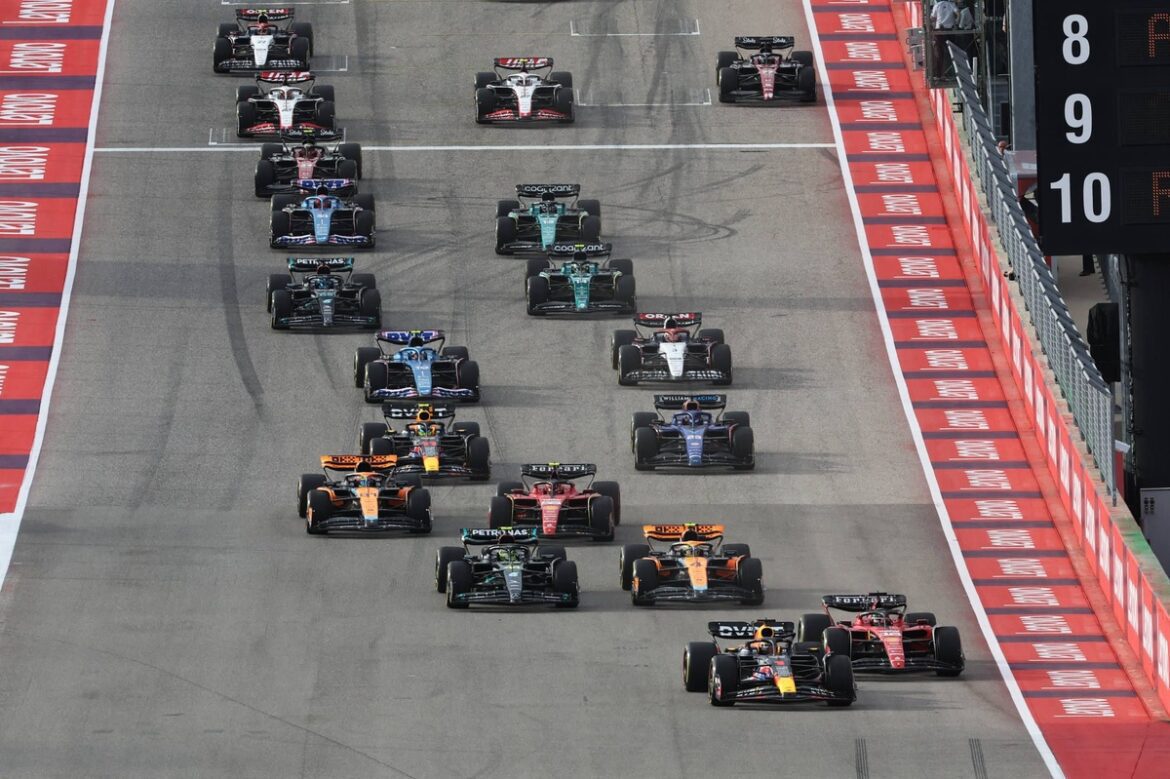The Future of Sprint Races in Formula 1: Expanding the Format by 2027
As Formula 1 continues to enhance its appeal, the series is considering expanding its sprint race format, potentially increasing the number of sprint events from the current six to around ten by the year 2027. This evolution comes as the sport aims to captivate a wider audience and provide more excitement during race weekends.
Introduction to Sprint Races in Formula 1
Sprint races were first introduced to the Formula 1 calendar in the 2021 season. The intent was to create a more engaging atmosphere for fans attending the grand prix events and those watching from home. These short races, held on Saturday, serve as a precursor to the main event on Sunday, effectively adding an additional layer of competition and anticipation to the race weekend.
Initially, F1 experimented with three sprint races per season, but as of 2023, it expanded this to six sprint events annually. The positive shift in public and driver sentiment regarding the sprint format has fueled discussions about increasing the number of sprint races in the coming years.
The Value of Sprint Races for Fans and Promoters
The addition of sprint races has been met with mixed reactions from fans and event organizers. Bobby Epstein, co-founder and managing partner of Austin’s Circuit of the Americas, expressed that while there hasn’t been a significant surge in ticket sales related to the sprint format, it undeniably enhances the overall experience for attendees.
Epstein noted, “It just gives more value to the ticket. I don’t know if it’s translated to a lot more ticket sales, but the fans seem to be warming up to it.” He emphasized that the sprint race increases the entertainment value of the event, allowing fans to enjoy more action-packed content over the weekend. Although it may not directly influence ticket purchasing decisions, the added excitement of a sprint race encourages fans to spend more time at the circuit, which in turn benefits the promoters.
Insights from the Miami Grand Prix
Tyler Epp, the representative for the Miami Grand Prix, initially harbored skepticism about the value of adding a sprint race. However, after witnessing the positive impact on attendance and fan engagement, he acknowledged his previous doubts. Epp pointed out that the inaugural sprint race in Miami attracted a notable increase in Saturday attendance, indicating that fans were eager to experience the thrill of a sprint.
“I was wrong about the sprint race; I was very concerned about the value proposition there, but I couldn’t have been more wrong,” he stated. “The feedback and the data we got showed that year over year our attendance was up on a Saturday, and they were there early for a sprint race.” This sentiment underscores a growing acceptance of the sprint format among fans, which could lead to greater demand for such events in the future.
The Demand for More Sprint Races
As the Formula 1 calendar continues to expand, currently featuring up to 24 grand prix events annually, the limited number of sprint races has become a topic of interest. Currently, only a quarter of the races are designated for sprint events, which has led to an increased demand from various promoters eager to host more of these engaging races.
Stefano Domenicali, the CEO of Formula 1, has hinted at the possibility of increasing the number of sprint races through ongoing discussions with stakeholders, including the teams and the FIA. Although the upcoming 2026 season will maintain the six-sprint format, there are plans to explore the expansion to ten sprint races by 2027.
The Shift in Fan and Driver Sentiment
Domenicali has noted that the majority of fans, aside from a few traditionalists, are in favor of sprint weekends. He stated, “Promoters push for this format, and now the drivers are interested as well.” The enthusiasm for the sprint format suggests that it is becoming an integral part of the F1 culture, enhancing the overall experience for both fans and participants.
In his comments, Domenicali acknowledged that while the sprint format may deviate from the traditional F1 structure, it allows for more action and commentary opportunities during the race weekend. He emphasized the need to adapt and evolve the sport to cater to a younger demographic, which has increasingly been drawn to the thrilling nature of sprint races.
Exploring New Ideas: Reverse Grids and Shorter Distances
In addition to expanding the sprint format, Domenicali has floated ideas such as implementing reverse grid races and reducing the length of grand prix distances. Although these concepts are not confirmed steps that F1 plans to take, they highlight the ongoing dialogue about how to modernize the sport and keep it relevant for future generations of fans.
Epstein from COTA acknowledged the challenges F1 faces in balancing tradition with innovation. He expressed confidence in Domenicali’s leadership, stating, “I think Stefano would only do that if he thought it was in the best interest of the sport.” This sentiment reflects a shared understanding among promoters and stakeholders that any changes should prioritize the sport’s heritage while also enhancing its appeal.
Conclusion
As Formula 1 looks ahead, the potential expansion of the sprint race format represents a significant shift in the way the sport engages with fans. By considering more sprint events, the series aims to create a more dynamic and entertaining experience that resonates with a broader audience. The positive feedback from fans and promoters alike indicates that the sprint format is here to stay, paving the way for exciting developments in the world of Formula 1 racing.
